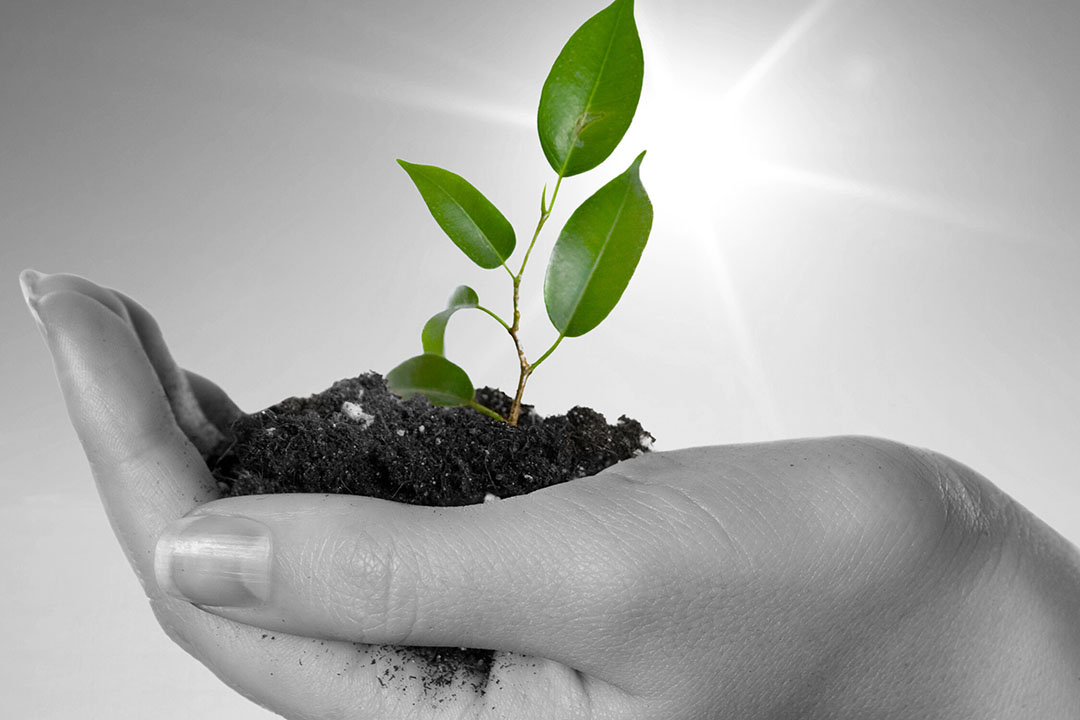Global feed outlook for 2021

A look forward at major trends that are expected to impact the feed industry worldwide according to experts in the sector from around the globe.
For those who pay close attention to farming and food production, it’s not hard to guess the one overall trend that’s likely to most impact the global animal feed industry in 2021. That trend, as you might have guessed, is sustainability.
New ingredients, new feed manufacturing processes and feeding technologies, increased digitisation of the industry − these aspects will all continue to reduce the impact of animal feed production on the planet’s environment and allow the industry to thrive for years to come.
Regulations requiring more sustainability – The ‘Green Deal’
In Europe, as in other parts of the world, regulations requiring more sustainability are already here. Foremost among them, explains Robbie Walker, Growth Officer at Alltech Europe, is a set of EU regulatory and policy guidelines called the ‘Green Deal,’ which relate to both environmentally-friendly practices and boosting the green economy. In terms of how this deal will impact the animal feed industry, Walker explains that “there will be restrictions on nitrogen run-off, so lower protein diets and precision diets will be needed and we will require technology to gather data and turn it into useful insights for decision-making.”
…there are expense and sustainability issues with fish meal…”
Researching alternative proteins
The deal also includes a legal target of 25% organic animal feed production in the EU by 2030, supporting the growth of organic farming, which is already strong in the EU and considered to be the most sustainable method of crop and livestock production. Patrick Charlton, Vice President of Alltech Europe, adds that because “there are expense and sustainability issues with fish meal,” Alltech is actively researching alternative proteins such as insect meal to replace fish meal in its aquaculture feeds. “The first production of insect meal is coming on stream in the UK and there are considerable investments being made in France, the Netherlands and Spain,” he says. “The insect feed industry in Europe has stated that within about 5 years, there will be a million metric tonnes of oil and meal produced each year.” Some yeast proteins are also being used in feed, Charlton reports, mostly in fish and chick feed where diets are based on high-quality protein.
The target of the project (FEED-X) is for 10% of the global feed industry to include alternative feed ingredients in their value chains.”
FEED-X project: Affordable and sustainable aquaculture feed production
A 2-year multi-partner project called FEED-X, which is designed to remove the barriers to more affordable and sustainable aquaculture feed production worldwide by 2030, is just ending, but its lessons will be applied for years to come. FEED-X has focused on salmon and shrimp, two species with particular feed requirements and infrastructure. “The target of the project is for 10% of the global feed industry to include alternative feed ingredients in their value chains,” state FEED-X organisers on their website. “This will be achieved by sourcing, testing, financing and scaling up alternative feed ingredients. The expected impact of the project is that it will significantly reduce the environmental impacts of aquaculture seafood in terms of feed ingredient production, specifically ingredients that contribute to deforestation, exhaust global carbon emission budgets or those that are sourced from non-responsible fishing practices.” The 2020 edition of The State of World Fisheries and Aquaculture, published by the United Nations Food & Agriculture Organization (FAO), also calls for guidelines for sustainable aquaculture industry growth, including ‘sustainable intensification’ and ‘innovative value chains.’

Insect sustainability
In Australia, feed for the main aquaculture species (Atlantic salmon) is becoming more sustainable through replacing more of soybean meal or fishmeal with black soldier fly larvae meal (BSFLM) made from flies that have been fed food waste. Duncan Rowland, executive officer at the Feed Ingredients and Additives Association of Australia and Stock Feed Manufacturers Council of Australia, notes that BSFLM is already also found in poultry feed in some states and work is underway to certify it for pig production. For aquaculture, feed needs to be extruded so that it doesn’t break down in the water column before being consumed, but for poultry or pigs, a pelleted form is fine.
Scaling up production of insect meal
“We have a number of BSFLM producers in Eastern Australia and there is plenty of food waste,” says Rowland. “The issue is scaling up. GoTerra, based in Canberra, collects up to 2 tonnes of waste a week from the household garbage stream. The system is also equipped to deal with the waste disposal systems of high-rise buildings. For the aquaculture and poultry sectors (but not yet for pigs), BSFLM can also be fed waste from meat processing plants.” 2 insect feed mills have been built in the last 18 months in Tasmania, both extrusion mills that produce feed for Atlantic salmon, says Rowland. In addition, because new fin fish enterprises have also started up in Western Australia, impending retrofits to feed mills − or the building of new plants − are expected. Arnaud Bouxin, deputy secretary general of the EU feed association FEFAC, says the development of new protein sources based on insects (also microbial biomass purpose-produced or as a co-product from fermentation) is growing, mostly for fish and young farm animals. “With the stimulation of use of non-human edible biomass as feed, in particular proteins, there is a potential for increased use of these emerging resources,” he says. “Former foodstuffs are far from new as a feed ingredient, but their nutritional value and low environmental footprint are increasingly appreciated, both for monogastrics and ruminants.” And while the adoption of new feed ingredients is based on many factors, the feed sector, says Bouxin, often has “to assess what is available at a competitive price. In this context, we will also still need to make the best of feed ingredients with lower nutritional value.”
Addressing sustainability challenges
Bouxin believes the EU feed sector is actively working to address the challenges put forward in the EU Green Deal and the FEFAC Feed Sustainability Charter 2030. “We’re expecting to see, for example, innovative feed formulation, new processing techniques and feed additives to reduce enteric fermentation and methane emissions in ruminants,” he says, “as well as new efficient antioxidants to optimise resource use.” Bouxin adds that because the risk of mycotoxin exposure is likely to increase due to climate change and the increasing use of co-products, access to mycotoxin binders is likely to become even more essential.
FEFAC Feed Sustainability Charter 2030
The FEFAC Feed Sustainability Charter 2030, which was presented in late September, consists of 5 ambitions on how the EU feed sector can become more sustainable in the next decade. 1 of the 5 ambitions, which was discussed during the recent livestreamed FEFAC XXIX Congress, is a deforestation-free soy supply chain. Michael Scannell, Deputy Director General, DG AGRI, EU Commission, noted that “consumers no longer accept soy imports that lead to deforestation; they want this guarantee. Therefore we need fully traceable systems and certification of these imports.” Global companies such as Cargill are already moving fast on this front. As reported in its 2020 mid-year Progress Report, Cargill has already estimated how much of its contracted soybeans in Brazil are grown on land that’s free of deforestation or land conversion. Cargill has also mapped its Brazil supply chain, expanded direct engagement with Brazilian farmers and continues to grow its Sustainably Sourced and Supplied (Triple S) certification programme in Brazil and Paraguay.
Sustainability certification
Sustainability is also being recognised by feed certification firms such as GMP+ International. Its GMP+ Feed Certification scheme guarantees safety, reliability, quality and sustainability, and the company is preparing a separate standard for European sourcing. “The demand for this is mainly coming from feed companies based in Germany and the Netherlands,” says Managing Director Johan den Hartog. “We expect to have that ready in the next 6 months. We will also investigate whether there is a possibility to develop a standard relating to the carbon footprint of particular ingredients, but that will take longer to create.” GMP+ International will also be paying more attention to feed biosecurity (e.g. Africa Swine Fever) as part of the scope of feed safety.
US feed industry outlook
Sustainability is also affecting the US feed industry. Leah Wilkinson, Vice President of Public Policy and Education at the American Feed Industry Association (AFIA), reports that “we are currently working on defining sustainability and how to apply that definition across the different animal sectors.” In addition, the Association of American Feed Control Officials recently expanded animal species able to be fed dried black soldier fly larvae in salmon and poultry feed, and its use is being expanded into pigs as well. On other fronts, AFIA is working with the International Feed Industry Federation to speed up and harmonise the feed ingredient approval process on a global level. This includes things like being able to use a single scientific study for application in multiple countries to get approval of a particular novel ingredient. Continuing to grow export markets is also a priority for the AFIA, and the organisation hopes to make major progress in 2021 in negotiation/implementation of US trade agreements with China, Japan, the UK and potentially the EU. US feed makers export poultry, dairy cattle and pig feed and feed ingredients and technologies to these markets, and Wilkinson adds that pet food exports to China have been growing strongly. “Exports are critical to the development of the feed industry here, and we also need further development on the ‘ease of doing business’ front,” she explains. “This means more rural broadband internet and other types of infrastructure.”
Feed additives outlook – sustainability
In the additive sector, again tied to sustainability, Australia’s Commonwealth Scientific and Industrial Research Organisation (CSIRO) has developed an additive called ‘Future Feed’ that’s currently being commercialised. It’s made from the seaweed Asparagopsis, which Rowland says has been shown to reduce methane emissions in beef and dairy cattle by more than 80% in research trials in Australia and the US. Asparagopsis also contains many micronutrients and has a probiotic effect. In a new report by Reportlinker on the future of feed additives, the authors note that growing demand for meat is expected to boost demand for additives. “Poultry feed additives have one of the largest shares in the global feed additives market, owing to the heavy demand for poultry meat, augmented by the consumption of processed poultry in countries such as the United States, China, India, Russia, Brazil, Japan and Australia.”
A perfect storm put pressure on feed additive sector
For his part, Guy Soreq, CEO and founder of additives firm Glowlit, notes that in 2019, the prices of different feed additives rose and fell at different times. “In 2020, however, there was a perfect storm as everything spiked at once, placing a massive amount of stress on the industry,” he says. “We also saw that feed additive prices rose far more quickly than they fell, stemming from a common market phenomenon in which sellers are apprehensive about passing on lower prices during a market recovery.” In 2021, Soreq expects to see continued adoption of digital tools in the feed industry. “Covid-19 rapidly accelerated the digitalisation of trading houses and farms, and I’m certain that this will only continue to grow,” he says, “with the realisation that with the growth of data accessibility comes business growth.”











